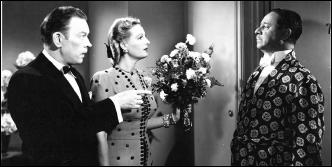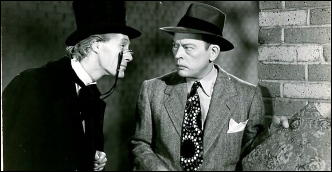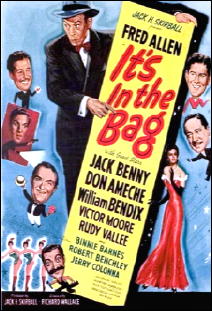Reviewed by DAVID VINEYARD:

THE YELLOW ONE. CCC Filmkunst, Germany, 1964. Originally released in West Germany as Der Schut; also released in the US as The Shoot and Yellow Devil. Lex Barker, Maria Versini, Rolf Wolter, Rik Battlaglia, Marianne Hold, Friedrich von Ledebur, Pierre Fromont, Dusan Janicijevic, Dieter Borsche, Chris Howland. Screenplay Georg Marischka and (uncredited) Robert Siodmak, based on the novel by Karl May. Directed by Robert Siodmak.
If you ever wondered what a Lone Ranger movie set in the Balkans would be like this Old Eastern is your movie. Lex Barker, who played beloved German author Karl May’s hero, Old Surehand, in a series of Westerns about Apache chief Winnetou with Pierre Brice, sails for the old world and the Balkans here as Old Surehand’s Middle Eastern incarnation (it’s the same character) Kara Ben Nemsi (variously Karl the German or Karl Blackbeard) author May’s stand in.
Based on the last of a five novel sequence that began with In The Desert and known as the Oriental Odyssey (yes, I know it isn’t what we mean by the Orient and the term Oriental is considered derogatory today), Der Schut or The Shoot and sometimes The Yellow One, brings to a close Kara Ben Nemsi’s sojourn through the Ottoman Empire with an action-packed fight to the death with a master criminal known as der Shut who he has seen traces of throughout his Mid East adventures.

Nirwan (Rik Battaglia) a wealthy merchant approaches Sir David Lindsey (Dieter Borsche) and his man Archie (Chris Howland) on Sir David’s yacht when he makes port in Albania to ask his help to rescue journalist Henri Galingre (Pierre Fromont) held captive by der Schut and help the interior region of the Skipetars, Albanian Muslims, escape the oppressive reign of terror of the mysterious kidnaper der Schut, and naturally Sir David turns to his friend Kara Ben Nemsi and hadji Halef (Lex Barker and Rolf Wolter), his servant, to join the quest.
The comical Sir David and his servant are recurring characters in the novels who at various times either complicate the action or inadvertently help things along depending on their level of incompetence.

Karl May was a beloved German storyteller who survived tragedy and a criminal past to write uplifting books that became beloved young adult literature. His Winnetou and Old Surehand books inspired Indian Clubs like the Boy Scouts that popped up all over Europe, and his admirers include as diverse a readership as Albert Einstein, Albert Schweitzer, Herman Hesse, Henrik Siekiewicz (the great Polish national novelist, author of Quo Vadis and his own attempt at a Karl May book Into The Desert) and Adolph Hitler.
May’s philosophy can be found in his autobiography and in his allegorical novel Ardijistan and Djistan but shines through in his avatar, the moral and stalwart Kara Ben Nemsi/Old Surehand who can best be described as a cross between Superman, James Bond, Indiana Jones, the Lone Ranger, Davy Crockett, and Jesus Christ.

Kara Ben Nemsi first appeared in German cinema in the silent era then again in the late thirties and the nineteen fifties, and again in the sixties with two outings starring Lex Barker and Rolf Wolter, this and Durch Wilde der Kurdistan. There was also a serialized German television series adapting the Kara Ben Nemsi novels, some episodes of which can be seen in German on YouTube. May’s books certainly contributed to the popularity of Eastern themes in German popular literature and cinema that includes the original Kismet, Joe May’s serial The Indian Tomb, and Fritz Lang’s dyptich remaking the serial in 1958.
Wolter also appeared with Barker in two non Winnetou Westerns based on May’s works (and reviewed here) all directed by Robert Siodmak (Phantom Lady, The Spiral Staircase) brother of writer Curt Siodmak (Donovan’s Brain and the screenplay for The Wolfman) who, like Fritz Lang, returned to his homeland late in his career. Wolter was a popular character actor perhaps best known here for his role in Cabaret as Lisa Minneli and Michael York’s clueless fellow boarder who represented the German’s people failure to comprehend what was happening in their country.

Kara Ben Nemsi and Halef are joined by Omar (Dusan Janicijevc) whose wife Tschita (Maria Versini) has been kidnaped by der Schut and by the wife of kidnaped Henri Galigre, Annette (Marianne Hold) in their quest, hampered by the fact der Schut knows they are coming and has laid traps for them along the way.
Kara and Halef free a village from the heavy hand of der Schut’s man the Mubarek (Friedrich von Neidbhur, Queequeg in John Huston’s Moby Dick, a nobleman who liked to dabble in acting), and in typical Karl May plotting style, just about all of the heroes are captured and escape multiple times learning a bit here and there as they go and trimming down the numbers of the opposition. Whatever aspirations the books may have the plotting is pure pulp adventure revealing their origins as serialized novels.

Like the Winnetou films these are handsome productions shot on location in gorgeous widescreen color with large casts and numerous well done set pieces that here vary from being ambushed from above on a barge, an attack by an escaped bear, being dragged behind a fleeing wagon, trapped in a burning house surrounded by the enemy, hand to hand combat, daring escapes, speeding horses, the cavalry coming to the rescue, well at least the Turkish cavalry, and Kara Ben Nemsi and Halef’s deadly marksmanship, though you might question why the film needs quite so much comic relief (Halef, Sir David, and the servant Archie) and notice almost exactly the same actors are in all the Barker films (Battaglia must have tired of being killed by Barker after four outings) and Old Albania looks a lot like the Old West.

Barker, not the most expressive of actors, even gets a dramatic scene where he weeps when his beloved horse is killed before he walks off into the sunset, I suppose to return to the Old West and Winnetou (though the latter is killed in the books). At least some of the books carry Kara/Old Surehand around the world in adventures though those were never filmed. Anyway it is one of the few times you will see Barker exhibit any emotion in a film other than stalwart heroics are mild bemusement save for his outing as Q Patrick’s Peter Duluth in The Female Fiends.
This one does exist in a dubbed English version though the German version available on YouTube is free and a fine handsome print. Once you know the plot you won’t miss a lot since the story is pretty straight forward right down to der Schut’s jealous wife who helps Tschita escape. My German is atrocious and it has been years since I read the book, but I had no problem following the plot or what was being said.
This is old-fashioned movie making, a Western with burnooses instead of war feathers and turbans and fez rather than buckskins and ten gallon hats. The cast is competent, the action well choreographed, cinematography and direction both well above the average, and the Saturday matinee style plot well executed. It’s actually quite a bit of fun, though I still haven’t quite figured out what the Lone Ranger and Tonto were in Albania for in the first place.


